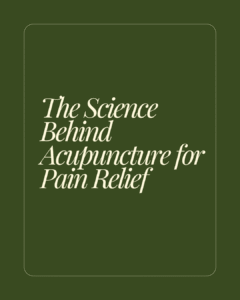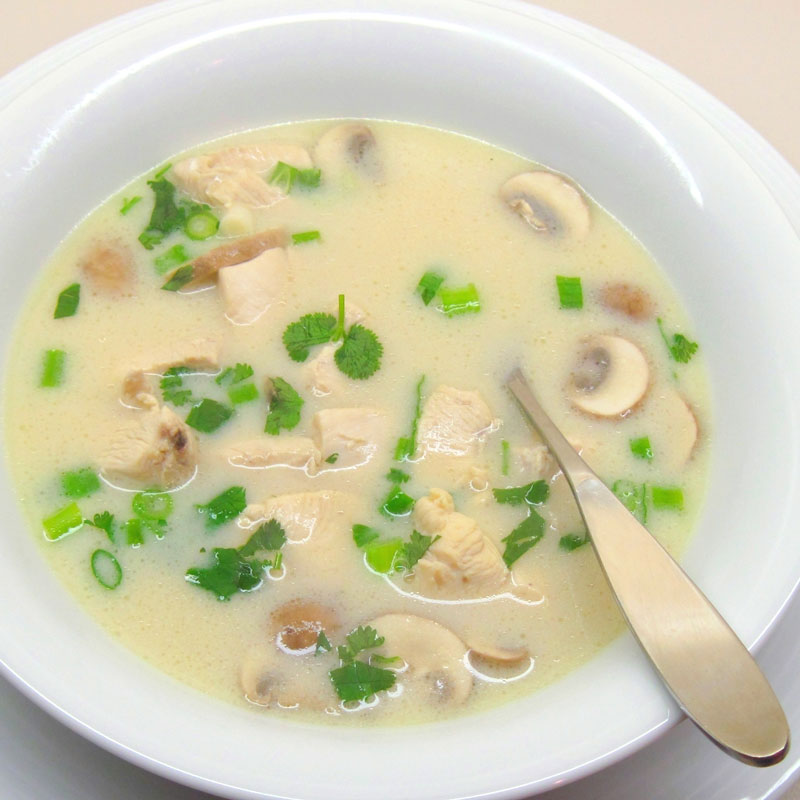
For many people living with ongoing pain, acupuncture for pain relief offers a bridge between ancient wisdom and modern science. At Gardenvale Acupuncture, we combine Traditional Chinese Medicine (TCM) principles with evidence-based acupuncture for pain relief to help reduce discomfort, restore movement, and support long-term healing.
How Acupuncture Influences the Nervous System
When a fine needle is inserted, sensory nerves under the skin and in the muscles send signals to the spinal cord and brain. This stimulates the release of natural pain-relieving chemicals such as endorphins, enkephalins, serotonin, and adenosine, which help calm overactive pain pathways (Vickers et al., 2012).
Modern imaging supports these effects. Functional MRI studies show that acupuncture can modulate activity in the somatosensory cortex, limbic system, and anterior cingulate cortex; regions involved in processing and interpreting pain (Hui et al., 2015). In simple terms, acupuncture doesn’t just block pain at the site; it changes how the brain perceives it.
Acupuncture and Inflammation
Research has found that acupuncture may influence the body’s inflammatory response by altering cytokine activity and improving local circulation (Zhang et al., 2024). This helps the body resolve inflammation more effectively, which may explain why acupuncture can relieve both acute injuries and chronic conditions such as osteoarthritis, migraines, and fibromyalgia (Zhang et al., 2024; Vickers et al., 2012).
In Traditional Chinese Medicine terms, pain often arises from Qi or blood stagnation. The reduction in inflammation and improvement in blood flow observed in modern studies mirror the ancient idea of moving Qi and restoring balance.
Acupuncture’s Effects on the Brain
Neuroimaging research shows that repeated acupuncture treatments can reshape how the brain responds to chronic pain. Studies using fMRI demonstrate changes in neural connectivity and habituation within key pain-related brain regions such as the thalamus and middle cingulate cortex (Chen et al., 2014; Zhao et al., 2022).
This supports the growing idea that acupuncture promotes neuroplasticity, the brain’s ability to rewire and adapt over time, which helps explain its longer-term effects for persistent pain conditions.
Clinical Evidence for Pain Relief
High-quality reviews and meta-analyses continue to validate acupuncture’s effectiveness:
- A large individual patient data meta-analysis of nearly 18,000 participants found acupuncture significantly outperformed both sham and no-treatment controls for chronic pain, including back, neck, osteoarthritis, and headache pain (Vickers et al., 2012).
- A 2024 systematic review and meta-analysis reported that acupuncture reduced pain scores by nearly one full point on the Visual Analogue Scale, with no serious adverse events (Zhang et al., 2024).
- A JAMA Oncology meta-analysis found acupuncture and acupressure significantly reduced cancer-related pain intensity, again without major side effects (He et al., 2019).
Taken together, these findings demonstrate measurable pain-relieving effects that extend beyond placebo, making acupuncture a safe, evidence-based complementary therapy.
Integrating Science and Tradition
At our Melbourne clinic, we apply these insights through a personalised approach:
- Each session is tailored to your type of pain: musculoskeletal, neurological, or inflammatory.
- We combine TCM pattern diagnosis (Qi, Blood, Yin/Yang balance) with modern pain physiology.
- Regular treatment sessions allow the body’s nervous and circulatory systems to reset gradually, much like retraining the brain’s pain pathways (Zhao et al., 2022).
Research shows the best results occur when acupuncture is part of a comprehensive care plan that includes movement, stress management, and healthy sleep.
The Bottom Line
The science behind acupuncture for pain relief is increasingly well understood. By influencing both biochemical and neurological systems, acupuncture helps reduce pain, improve function, and support whole-body healing.
If you’re seeking a Melbourne acupuncture clinic with an evidence-based and holistic approach, Gardenvale Acupuncture offers treatments grounded in both tradition and research.
References
Chen, L., Wang, H., Qian, Z., Zhang, Q., & Chen, L. (2014). Habituation effects of acupuncture on the human brain: Evidence from fMRI. PLOS ONE, 9(5), e97502. https://doi.org/10.1371/journal.pone.0097502
He, Y., Guo, X., May, B. H., Zhang, A. L., Liu, Y., Lu, C., & Xue, C. C. (2019). Acupuncture and acupressure for cancer pain: A systematic review and meta-analysis. JAMA Oncology, 5(12), 1742–1750. https://doi.org/10.1001/jamaoncol.2019.2421
Hui, K. K. S., Marina, O., Napadow, V., et al. (2015). Neural mechanisms of acupuncture as revealed by fMRI studies. Autonomic Neuroscience, 190, 48–57. https://doi.org/10.1016/j.autneu.2015.04.004
Vickers, A. J., Cronin, A. M., Maschino, A. C., Lewith, G., MacPherson, H., Foster, N. E., … & Linde, K. (2012). Acupuncture for chronic pain: Individual patient data meta-analysis. JAMA Internal Medicine, 172(19), 1444–1453. https://doi.org/10.1001/archinternmed.2012.3654
Zhang, X., Li, M., & Chen, Y. (2024). Efficacy and safety of acupuncture for pain relief: A systematic review and meta-analysis. Supportive Care in Cancer, 32(5), 1–12. https://doi.org/10.1007/s00520-024-08971-9
Zhao, Z., Wang, W., Liu, J., & Li, J. (2022). Coordinate-based meta-analysis of acupuncture for chronic pain: Neural mechanisms revealed by fMRI. Frontiers in Neuroscience, 16, 1049887. https://doi.org/10.3389/fnins.2022.1049887
Adriana Dalic





